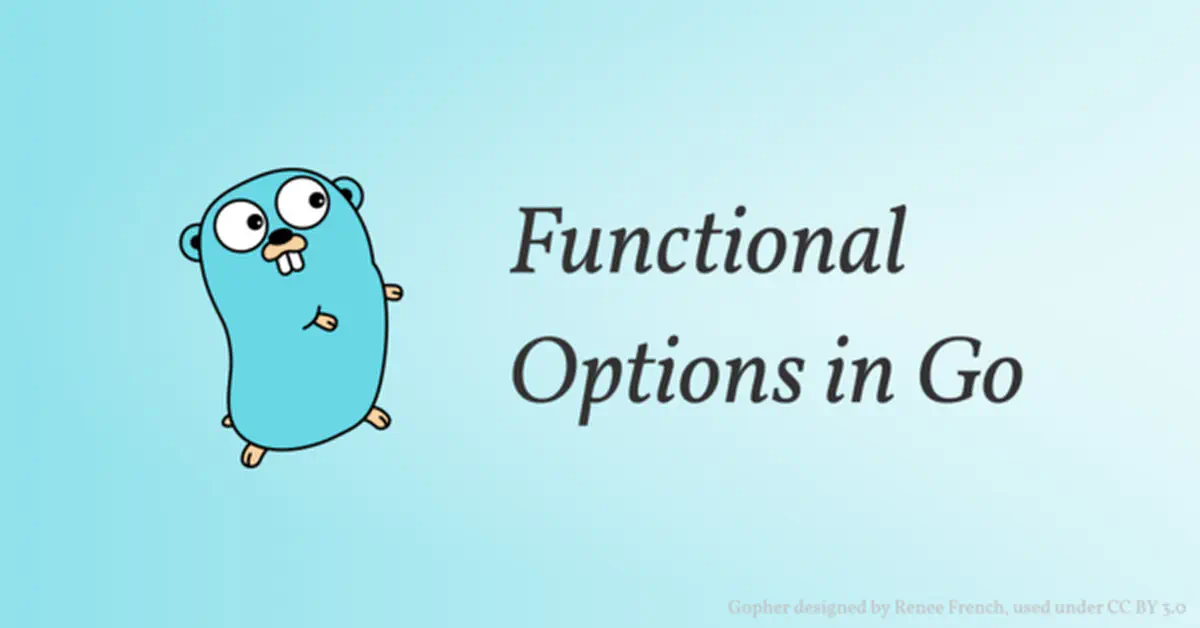The Functional Options Pattern is a design pattern used in programming. It helps to set up options for a function or object in a flexible and clear way. Instead of having many parameters in a function, you use options to configure it.
Use this pattern when:
- You have a function with many optional parameters.
- You want to make your code easier to read.
- You need to add new options in the future without changing existing code.
3 Benefits and Drawbacks of the Functional Options Pattern
- Readability: Your code is cleaner and easier to understand.
- Flexibility: You can easily add or remove options.
- Maintainability: Future changes are simpler and safer.
- Complexity: The pattern can be complex to implement and understand.
- Performance: There might be a small performance overhead.
Here’s a simple example to illustrate the Functional Options Pattern in Go:
1
2
3
4
5
6
7
8
9
10
11
12
13
14
15
16
17
18
19
20
21
22
23
24
25
26
27
28
29
30
31
32
33
34
35
36
37
38
39
40
41
42
43
44
45
46
47
48
49
50
51
52
53
54
55
56
|
package main
import "fmt"
// Options struct to hold the options
type Options struct {
Timeout int
MaxRetries int
}
// Default values for options
var defaultOptions = Options{
Timeout: 30,
MaxRetries: 3,
}
// Option function type
type Option func(*Options)
// Function to set timeout option
func WithTimeout(timeout int) Option {
return func(o *Options) {
o.Timeout = timeout
}
}
// Function to set max retries option
func WithMaxRetries(maxRetries int) Option {
return func(o *Options) {
o.MaxRetries = maxRetries
}
}
// Function that uses the options
func Connect(addr string, opts ...Option) {
// Initialize options with default values
options := defaultOptions
// Apply each option to the options struct
for _, opt := range opts {
opt(&options)
}
// Use the options in your function
fmt.Printf("Connecting to %s with timeout %d and max retries %d\n", addr, options.Timeout, options.MaxRetries)
}
func main() {
// Connect with default options
Connect("example.com")
// Connect with custom timeout
Connect("example.com", WithTimeout(60))
// Connect with custom timeout and max retries
Connect("example.com", WithTimeout(60), WithMaxRetries(5))
}
|
Here’s a simple example to illustrate the Functional Options Pattern in PHP:
1
2
3
4
5
6
7
8
9
10
11
12
13
14
15
16
17
18
19
20
21
22
23
24
25
26
27
28
29
30
31
32
33
34
35
36
37
38
39
40
41
42
43
|
<?php
class Options {
public $timeout;
public $maxRetries;
public function __construct($timeout = 30, $maxRetries = 3) {
$this->timeout = $timeout;
$this->maxRetries = $maxRetries;
}
}
function withTimeout($timeout) {
return function($options) use ($timeout) {
$options->timeout = $timeout;
};
}
function withMaxRetries($maxRetries) {
return function($options) use ($maxRetries) {
$options->maxRetries = $maxRetries;
};
}
function connect($addr, ...$opts) {
$options = new Options();
foreach ($opts as $opt) {
$opt($options);
}
echo "Connecting to $addr with timeout {$options->timeout} and max retries {$options->maxRetries}\n";
}
// Connect with default options
connect("example.com");
// Connect with custom timeout
connect("example.com", withTimeout(60));
// Connect with custom timeout and max retries
connect("example.com", withTimeout(60), withMaxRetries(5));
?>
|
The Functional Options Pattern is a powerful tool for making your code more flexible and easier to read. It helps to manage complex configurations in a clean way. However, it can also add complexity and a small performance cost. Use it wisely to get the most benefits.

 K5D
K5D
